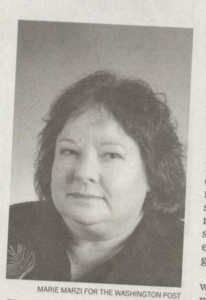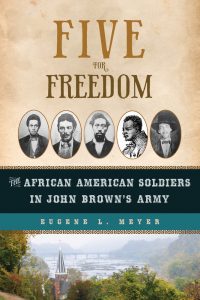Local Journalism, Claudia Levy, and “Five for Freedom”
Why Local Journalism Matters
Back in September 1991, I wrote a story about an EPA plan to incinerate 120,000 cubic yards of contaminated soil in rural St. Mary’s County, Maryland. This was on the “superfund” toxic waste site of the Southern Maryland Wood Treatment Plant. The story ran on Sept. 23, on page B5, inside the Metro section of the Washington Post. It was, as we would say, buried. It was also a one-off, meaning I did not do a followup story.
Then, 31 years later, I received a website email the other morning from Jean Torgerson, whom I had quoted. She wrote:
This note is so overdue, but I want to thank you for the wonderful piece you wrote around 1991-92 about an event that really threatened our community here in St Mary’s County, Md. ( EPA’s pending plans to locate a hazardous waste incinerator at The Southern Maryland Wood Treatment Plant, a Superfund site, and in the middle of a residential area, and a few miles from the Bay) .
After your piece in The Washington Post, we began receiving the attention of many people ( A lot of elected officials!) and within several years, after much work by local people and elected officials, EPA withdrew their Record of Decision ( ROD) for the site, and brought county reps into meaningful involvement in selecting the new ROD which used thermal distillation for the clean-up process. We found out much later, that the reversal of a ROD had never happened before.
So, again thank you so much for the work you put into that piece, and I wanted you to know what an impact it had.
My point here is not to belatedly take credit for an outcome I hadn’t even known about, but to underscore the importance of local reporting. In the current media landscape, when thousands of newspapers have folded or been absorbed by cost-cutting hedge funds, there remain precious few journalists to report and write such stories. “Democracy Dies in Darkness,” the Washington Post slogan under Jeff Bezos, applies especially to local coverage or lack thereof. I’m glad that my inside-Metro story had an impact, but I fear that today even the mighty WP would not have covered it.
A Fitting Farewell to Claudia Levy

It was good to see people. It was good to be with people. The Covid-delayed memorial gathering for Claudia Levy, our dear friend and former Washington Post colleague who, at 77, died suddenly last December, drew 100 or so to the Bannockburn Community Clubhouse in Bethesda, Maryland on Saturday, Sept. 17. It was a bittersweet occasion.
As Bart Barnes, the District editor at the Washington Post when I was hired onto his staff in 1970, noted, he’s attending more funerals than weddings these days. Some ex-Posties were leaning on canes, but aided or not, we were all leaning on each other. The event was not “streamed” and will not be on YouTube. There were no tech savvy millennials or Gen Z-ers to help us accomplish that.
The program, MC’d by Post obituaries editor Adam Bernstein, lasted for about 90 minutes. Claudia’s surviving sister Andrea, who lives in Northern California, spoke in a voice that sounded eerily like Claudia’s. Claudia sang alto in two choirs, and they were there too, to perform and pay tribute. Her parents – Sid, 101, and Ginny, 100 – were also present. “We should not be here having this memorial,” I said. “By that I mean Claudia should still be with us. But she’s not. So, we are here, grieving, remembering, and celebrating the life of Claudia Levy.” There were tears but also laughter as friends, neighbors and colleagues recalled her indominable spirit, her endless caring for others, and her rich life in music and art after she left the Post in 2004.
After all was said and sung, there was a reception, carefully curated by Post alums and Claudia friends Martha Hamilton and Megan Rosenfeld, and an array of Claudiana lined up against one wall, including a stunning portrait of her that Ginny – also an artist – had painted.
Everyone was appropriately masked. (Karlyn Barker, a key member of the planning committee, was still in quarantine from her own bout with Covid and sadly could not attend.) The gathering underscored our loss but also the selfless example Claudia had set for everyone. It was good to see people. It was good to be with people.
FIVE FOR FREEDOM: Raid Anniversary Special
On a rainy Sunday night 163 years ago, John Brown led 18 men down a dark country road to seize the federal arsenal and rifle works at Harpers Ferry. His plan was to arm and incite a slave insurrection that would topple the hated institution of slavery. With him were five African Americans, largely forgotten and the subject of my book Five for Freedom: The African Americans in John Brown’s Army. The insurrection ended in failure 36 hours later, but historians say it lit the spark that brought on the Civil War a year and a half later and, ultimately, led to abolition.
For the raid anniversary this year, the publisher Chicago Review Press is offering a 35% discount off the list price ($17.81 v. $26.99). The sale runs from Sept. 20 through Oct. 20. There are a dwindling number of hardcover copies in stock, so order now by clicking here. During checkout, use this code: FREEDOM35
But wait. There is more: If you would like your copy signed or inscribed, please send me a website message. I will reply with my address. Mail it to me (use media mail, if you wish, might take a little longer but it’s cheaper), and I will sign or inscribe it as you wish and return it to you postpaid.
Five for Freedom: The African American Soldiers in John Brown’s Army was named the best book of history/biography in 2019 by the American Society of Journalists and Authors. Read what some others had to say about it:
“Eugene Meyer has given the story of John Brown’s raid on Harper’s Ferry new meaning and relevance by restoring Brown’s black collaborators to their rightful place in history. Five for Freedom elevates the names Newby, Anderson, Copeland, Leary, and Green to stand with Brown as individuals who were willing to sacrifice their own lives to rid our country of the horror of chattel slavery.”
— Margot Lee Shetterly, author of Hidden Figures
“Finding fascinating stories that other writers miss has been Eugene Meyer’s calling card for decades, and he has done it again with this important and largely untold story of five men forgotten in the John Brown legend.”
— David Maraniss, Pulitzer-prize winning author and Washington Post Associate Editor
“A terrific read and an important book. Spanning nearly 175 years, Meyer’s deeply researched book shows how the lives of the courageous martyrs still influences the present day and will likely continue to do so for generations. You probably have never heard of Osborne Perry Anderson, John Anthony Copeland, Shields Green, Lewis Sheridan Leary and Dangerfield Newby. But after reading this book, you will never forget them.”
— Courtland Milloy, Jr., Washington Post columnist
“Journalist Eugene L. Meyer uses his seasoned reportorial skills to illuminate an important tale lying in the shadows of antebellum American history. Five for Freedom provides the overdue account of the five African Americans who participated in John Brown’s storied raid on Harpers Ferry. Deftly weaving history and biography, Meyer reconstructs how these five men came to join the ill-fated attempt to spark a slave revolt. Their role will not be forgotten now that—at long last—it is contained in an engaging and memorable book.”
— James McGrath Morris, author of Eye on the Struggle: Ethel Payne, the First Lady of the Black Press.

Thanks. The added comment about your book are cheerful, cheering and cheerful.